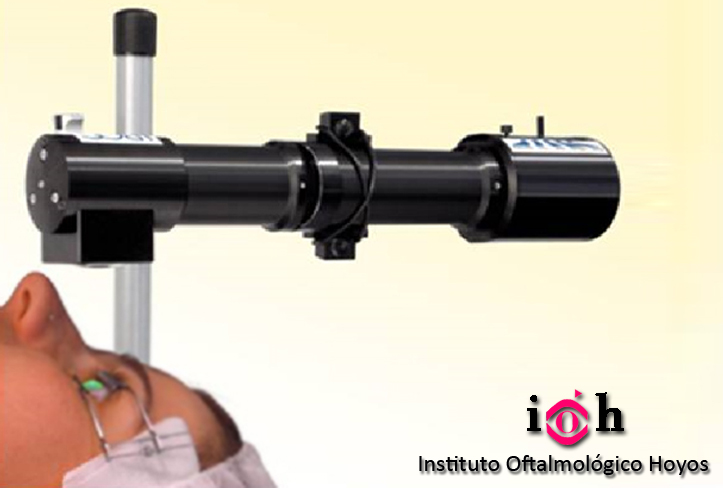CROSSLINKING
CROSSLINKING : TREATMENT OF CORNEAL ECTASIA DEGENERATION
What is corneal ectasia degeneration ?
Corneal ectasia degeneration is caused by a thinning of the cornea which means a progressive increase in corneal curvature. This induces progressive myopia and irregular astigmatism and ultimately leads to a decrease in visual acuity.
How is ectasia degeneration treated ?
In the very initial stages, the treatment of choice is the adaptation of CONTACT LENSES, and semi-rigid lenses are the ones which provide the best vision. However, they do not impede the progression of ectasia or the deterioration in vision. The definitive treatment would be a CORNEAL TRANSPLANT, which substitutes the cornea which has ectasia with a healthy one. Transplantation is however only advisable in very advanced cases, when the patient has tried every other alternative treatment and their vision is very low.
What is Crosslinking ?
This is a treatment which consists in instilling drops of Riboflavin (a photoactivator) and then exposing the cornea to UVA light. With this we are able to form bonds between the collagen fibers and subsequently make the cornea harder. The bonds harden the degenerated cornea in order to delay the progression of the degenerative process.
It is considered that in 12 years the regeneration of the cornea will have been produced and the bonds created by the treatment will disappear.
After this time it can be repeated.
How is Crosslinking performed ?
1. The corneal epithelium is removed.
2. We put riboflavin drops on for 30 minutes.
3. We expose the cornea to UVA light for 30 minutes.
4. A therapeutic contact lens is placed for 3-4 days to reduce discomfort while the corneal epithelium regenerates.
Does Crosslinking hurt ?
During the surgical procedure no pain is felt, as the cornea is perfectly anesthetized with the anesthetic eye drops which we use.
During the postoperative phase, there will be discomfort in the eye and even pain for the first 24-48 hours. The patient will feel better in a semi-darkened room, lying down and quiet during the first few hours. Painkillers will be prescribed to the patient.
Will my vision increase with Crosslinking ?
This surgery does not attempt to improve one’s vision nor reduce one’s graduation, so you will continue to use glasses or contact lenses.
During the first month you will notice a slight decrease in vision and then during the first three months you will recuperate your vision.
Does Crosslinking have any risks ?
Crosslinking is a surgical intervention and as such has the possible complications inherent in any surgery.
INFECTION : This risk exists during the first few days, while the cornea is regenerating its epithelium.
DELAYS in the regeneration of the corneal epithelium.
Can the UVA light harm the eye ?
The ultraviolet light which is used during the procedure is perfectly calibrated so as not to penetrate more than 300 microns (0.3 mm) and does not reach other eye structures, so there is therefore NO RISK to the crystalline lens or the retina.
The cornea must have a minimum thickness of 400 microns to ensure that the deepest layer is not reached, as this would produce a corneal edema

